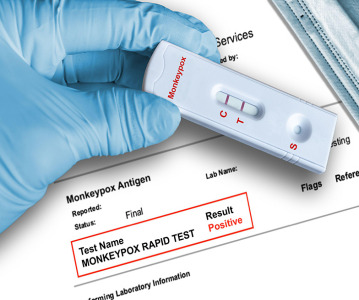Regeneron and Sanofi Announce 18-Month Results of ODYSSEY LONG TERM Trial with Praluent

Regeneron Pharmaceuticals and Sanofi have announced that 18-month (78-week) results of a Phase III trial of Praluent (alirocumab), an investigational therapy, involving 2,341 high risk patients with hypercholesterolemia were published online in The New England Journal of Medicine. In the ODYSSEY LONG TERM trial, Praluent 150 mg every 2 weeks reduced low-density lipoprotein cholesterol (LDL-C or "bad" cholesterol) by an additional 62% at week 24 when compared to placebo, the primary efficacy endpoint of the study, with consistent LDL-C lowering maintained over 78 weeks.
"These results demonstrated the durable efficacy for Praluent when added to maximally-tolerated statin therapy and further reinforce its generally consistent safety profile," said Jennifer Robinson, Director of the Prevention Intervention Center, Professor, Departments of Epidemiology & Medicine, College of Public Health at the University of Iowa. "Additionally, the post hoc analysis of major cardiovascular events represents an important finding for Praluent — we look forward to results from the ongoing ODYSSEY OUTCOMES trial, which is prospectively evaluating the potential of Praluent to reduce cardiovascular events."
18-Month (78-Week) Safety and Efficacy Results
ODYSSEY LONG TERM evaluated Praluent 150 mg (n=1,553) every 2 weeks compared to placebo (n=788) in patients who were at high cardiovascular (CV) risk and who were receiving maximally-tolerated statin therapy with or without other lipid-lowering treatment. The trial included patients with heterozygous familial hypercholesterolemia (HeFH) (n=276 Praluent, n=139 placebo). Patients received 78 weeks of treatment followed by an 8-week safety assessment. Patients self-administered a subcutaneous injection every 2 weeks via a pre-filled syringe. Key results include
• At week 24, Praluent reduced LDL-C from baseline by an additional 62% versus placebo (p less than 0.0001) when added to the current standard of care, which included maximally-tolerated statins.
• Efficacy remained consistent throughout treatment, and, at week 78 there was a 56% reduction from baseline in LDL-C for Praluent versus placebo (p less than 0.0001).
• At week 24, 81% of patients in the Praluent group achieved their pre-specified LDL-C goal (either 70 mg/deciliter [mg/dL] or 100 mg/dL depending on baseline CV risk) compared to 8.5% for placebo (p less than 0.0001).
• Adverse events (AEs) occurred in 81% of Praluent and 83% of placebo patients, leading to discontinuation in 7.2% and 5.8% of patients, respectively. AEs were similar between groups, apart from differences in injection site reactions (5.9% Praluent, 4.2% placebo), myalgia (5.4% Praluent, 2.9% placebo), neurocognitive events (1.2% Praluent, 0.5% placebo), and ophthalmological events (2.9% Praluent, 1.9% placebo). In a 3759-patient, pooled safety analysis of nine placebo-controlled Praluent studies to be presented on Monday, 16 March at ACC.15, rates of skeletal muscle-related and neurocognitive events were generally balanced between Praluent and placebo.
• At week 78, positively adjudicated pre-specified CV adverse events (including additional CV AEs1 beyond those in the pre-specified ODYSSEY OUTCOMES endpoint of 'major adverse cardiac events' described below) occurred in 4.6% and 5.1% of Praluent and placebo patients, respectively.
• In a post hoc analysis using a pre-specified endpoint that included coronary heart disease death, myocardial infarction, stroke, or unstable angina requiring hospitalization, a lower rate of adjudicated major adverse cardiac events was observed in the Praluent group (27 of 1550 patients, 1.7%) compared with the placebo group (26 of 788 patients, 3.3%; hazard ratio 0.52; 95% CI, 0.31 to 0.90; nominal p less than 0.01). The cumulative incidence curves diverged progressively over time.
• ODYSSEY LONG TERM was not designed to evaluate CV outcomes. The number of CV events seen in the post hoc analysis was relatively small, which limits the ability to draw conclusions on the effects of Praluent on CV events. The ongoing ODYSSEY OUTCOMES trial will evaluate the CV benefits of Praluent in approximately 18,000 patients over 5 years.
Related News
-
News CPHI Frankfurt 2022: Innovator Interview – DSM Biomedical
At CPHI Frankfurt we spoke to Anne-Cecile Bayne, Global Science & Innovation Lead Pharma and Medical Nutrition, and Marc Hendriks, Vice President Strategy & Business Development, on their expertise in nitrosamines and business strategy at DSM Biomedica... -
News New WHO health emergency guidelines expect full transparency from Big Pharma
The WHO are proposing a new set of pandemic guidelines to set out how future global health crises should be handled. -
News Magic mushrooms could be used to treat mental health conditions
A compound found in magic mushrooms, psilocybin, could be used to treat mental health conditions and help patients suffering with severe depression, as shown by the results of the largest study of its kind to date. -
News UK-based partnership to launch DETERMINE study into rare cancer research
UK-based CRO Quanticate is set to partner with Cancer Research UK for the launch of the DETERMINE study focused on testing a range of existing and approved drugs and therapies on rare cancers. -
News FDA approves Thermo Fisher blood tests for wheat and sesame allergies
Both tests have been approved by the US regulator for in vitro diagnostic use -
News QIAGEN launches world’s first syndromic test for monkeypox
The test can distinguish between monkeypox and other diseases that cause similar symptoms. -
News Monkeypox Update: Vaccine shortage, sewage surveillance and global testing
As concern over the monkeypox outbreak continues to rise, we take a look at major developments from the first week of August. -
News CPHI Podcast Series: The importance of novel excipients for innovative drug development
The latest episode in the CPHI Podcast Series dives into the world of novel excipients and explores their importance for innovative drug development.
Position your company at the heart of the global Pharma industry with a CPHI Online membership
-
Your products and solutions visible to thousands of visitors within the largest Pharma marketplace
-
Generate high-quality, engaged leads for your business, all year round
-
Promote your business as the industry’s thought-leader by hosting your reports, brochures and videos within your profile
-
Your company’s profile boosted at all participating CPHI events
-
An easy-to-use platform with a detailed dashboard showing your leads and performance


.png)




